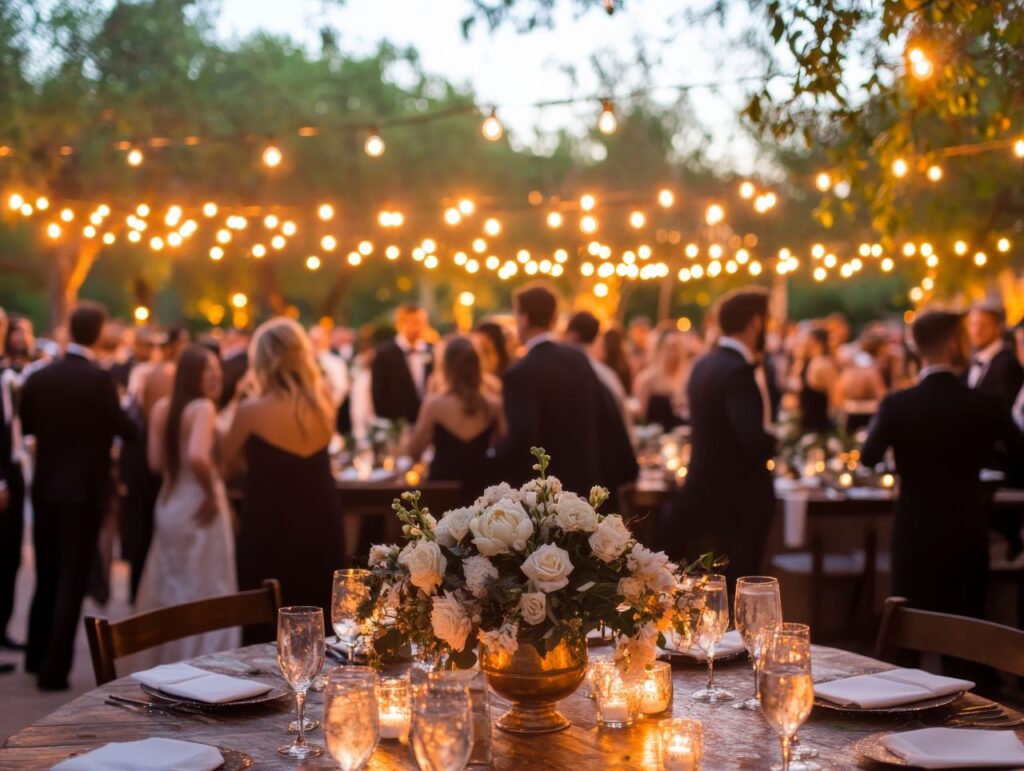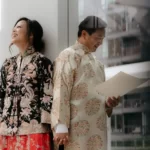There’s something undeniably magical about the night before a wedding. With the big day just around the corner, the rehearsal dinner sets the stage for what’s to come – all the love, excitement and lifelong memories with the most important people in your life. But here’s the big question couples always ask – who exactly deserves an invitation to the rehearsal dinner? While it might sound straightforward, this pre-wedding soirée comes with its own traditions, modern twists and etiquette rules that require careful consideration.
What a rehearsal dinner really means
Think of the rehearsal dinner as the elegant warm-up act before the wedding. It’s a chance for all the main players to do a walk-through of the ceremony, to bond over a good meal, and to toast to what’s about to unfold. More intimate than the main event, it allows for speeches that might not fit into the wedding reception and stories that deserve their own moment. That’s why creating an invitation to the rehearsal dinner isn’t just about logistics – it’s about curating an atmosphere where laughter flows easily and nerves settle.

The non-negotiables: Who always gets an invite
Tradition is clear on this one – the wedding party is at the very top of the list. Bridesmaids, groomsmen, flower girls, ring bearers (and their parents, if they’re young) – all should see an invitation to the rehearsal dinner land in their inbox or mailbox.
The officiant also makes the cut, along with immediate family members from both sides. These are the people who’ve stood beside you in more ways than one, and this evening is a way of saying thank you before the whirlwind of the big day begins.
Partners and plus-ones: Where it gets tricky
Here’s where modern etiquette bends a little. If a wedding party member has a long-term partner, they’re typically included in the invitation to the rehearsal dinner. It’s thoughtful, it avoids awkwardness and it ensures everyone feels included.
But if the rehearsal dinner is exceptionally small, couples sometimes limit plus-ones to just spouses or fiancés. The best approach? Be consistent because nothing feels worse than an uneven guest list.
Out-of-towners: A gesture of hospitality
Another group that often gets overlooked? Travelling guests. If friends or relatives have flown across the country – or even the world – it’s gracious to extend an invitation to the rehearsal dinner. It doesn’t have to be a huge sit-down meal; a casual cocktail reception or backyard barbecue works beautifully, giving them a warm welcome after their journey. Plus, it takes pressure off the wedding day itself, where time with the couple is often limited.
When to keep it small and private
Not every couple dreams of hosting 50 people the night before their wedding. Some prefer an intimate dinner with only immediate family and the wedding party. That’s perfectly acceptable. The key lies in setting expectations early so no one feels slighted when they don’t receive an invitation to the rehearsal dinner. Often, couples pair a smaller rehearsal dinner with a larger welcome party after, giving everyone a moment to celebrate while still protecting the intimacy of the core event.
Welcome parties and rehearsal dinners: Blurring the lines
Speaking of welcome parties, they’ve become increasingly popular – and sometimes they double as the rehearsal dinner itself. In this case, the invitation to the rehearsal dinner doubles as an invitation to the broader guest list. Think rooftop cocktails, live music and food stations with late-night favourites. The vibe is less “formal rehearsal” and more “let’s kick off the weekend in style.” Couples who choose this route love that it gets the party started and sets the tone for the wedding day.
Creative ways to word the invitation
The wording matters almost as much as the guest list. A rehearsal dinner invitation doesn’t need to feel stiff or overly traditional. Some couples send beautifully designed cards that match their wedding stationery, while others opt for chic digital invitations with playful wording. The important part is clarity – who’s invited, when and where it’s happening and whether attire should lean more toward casual, cocktail or black tie-inspired. Adding those little details ensures no one misinterprets what their invitation to the rehearsal dinner really means.
A night that sets the stage
Ultimately, the rehearsal dinner sets the emotional tone for the wedding. It’s where stories are shared that might not be told again, where hugs last a little longer and where the couple can take a deep breath before walking down the aisle. That’s why the invitation to the rehearsal dinner should be as carefully considered as the main event – it’s not just a precursor, it’s part of the whole celebration.









Leave a Reply